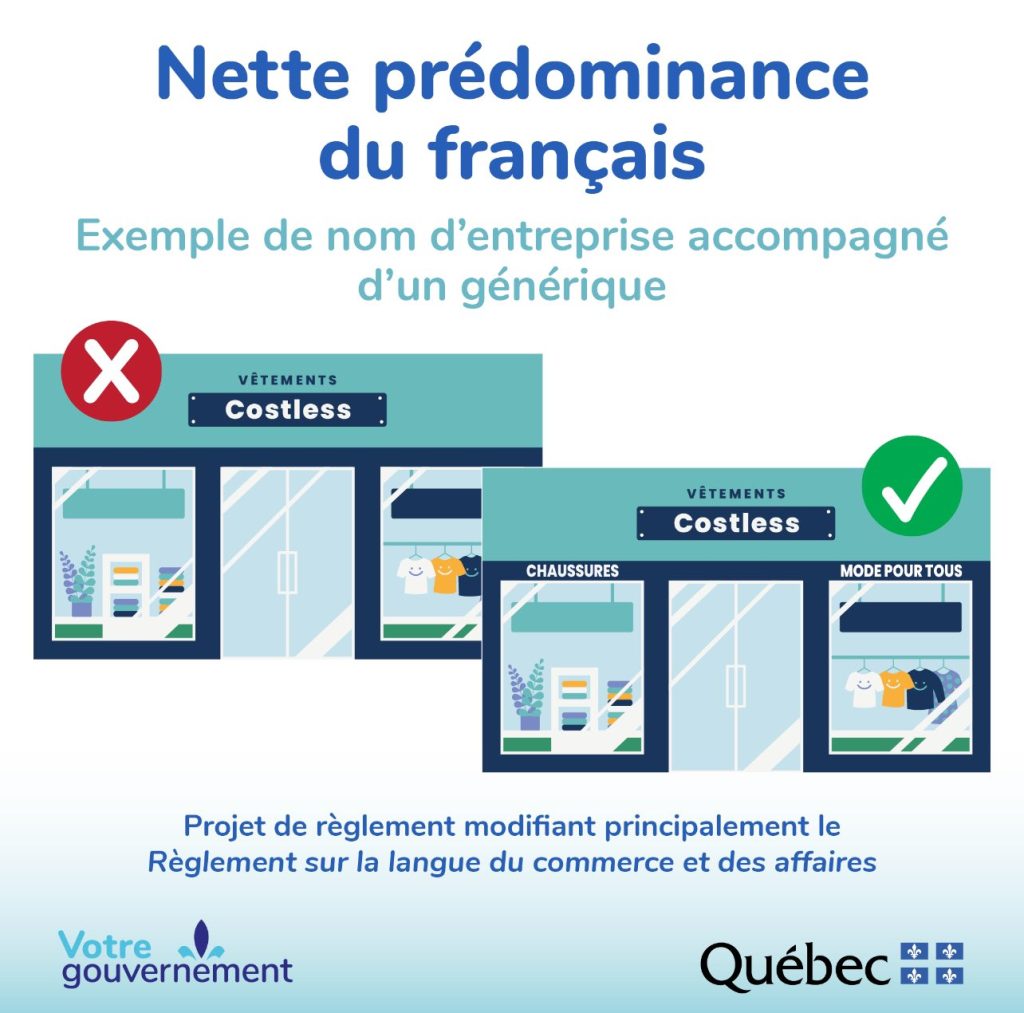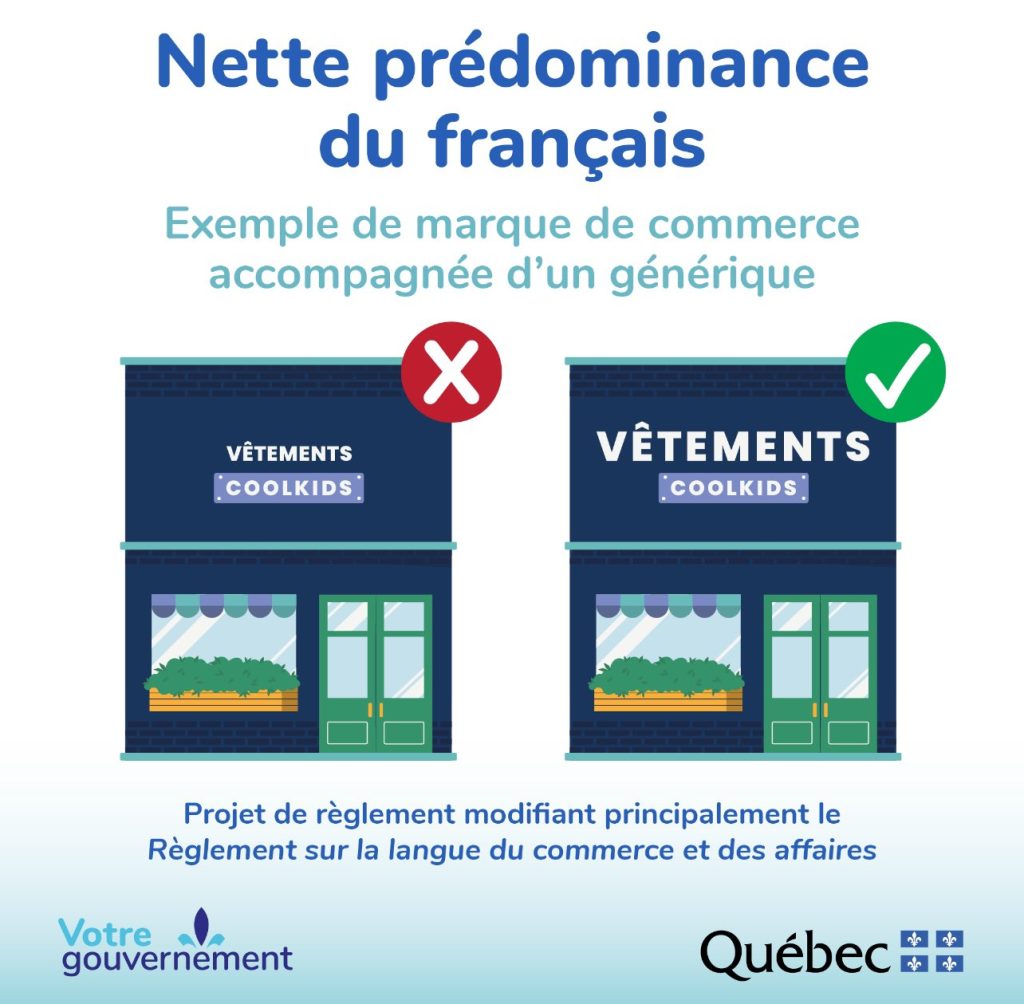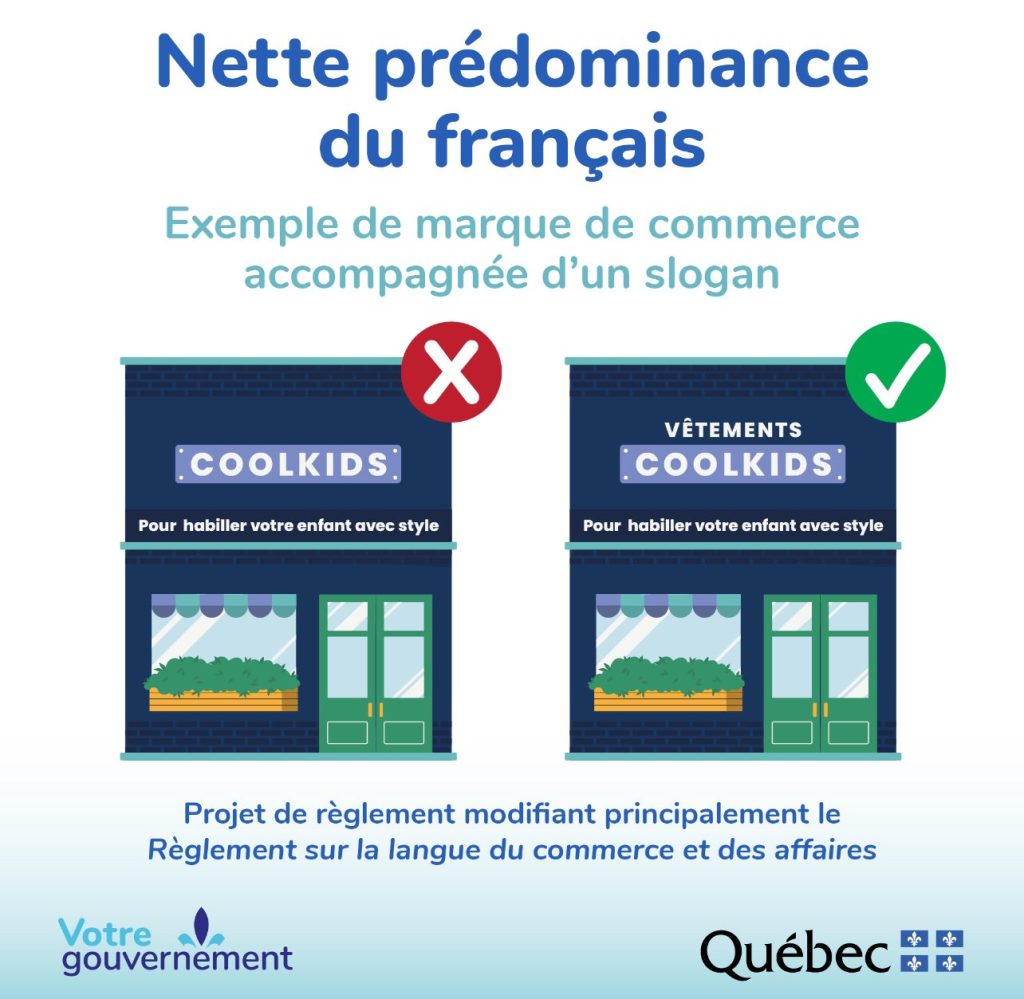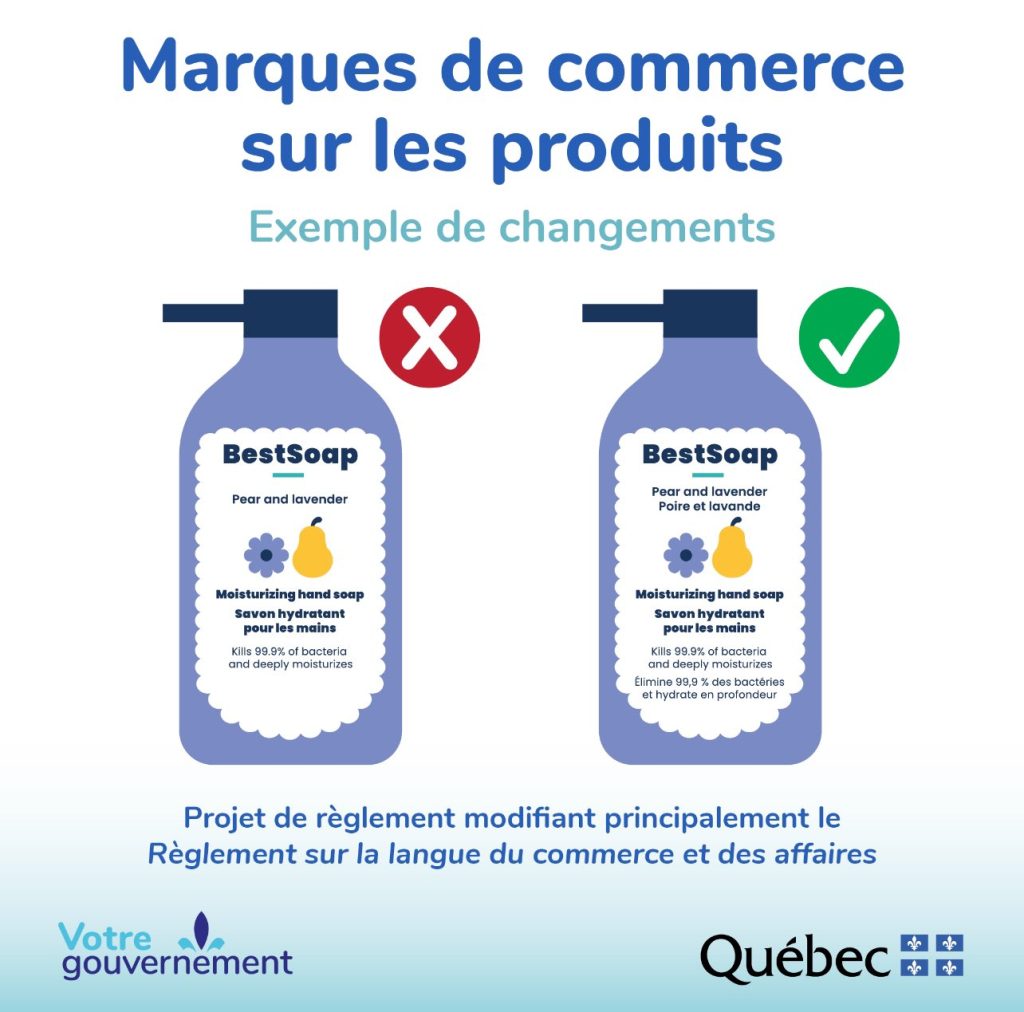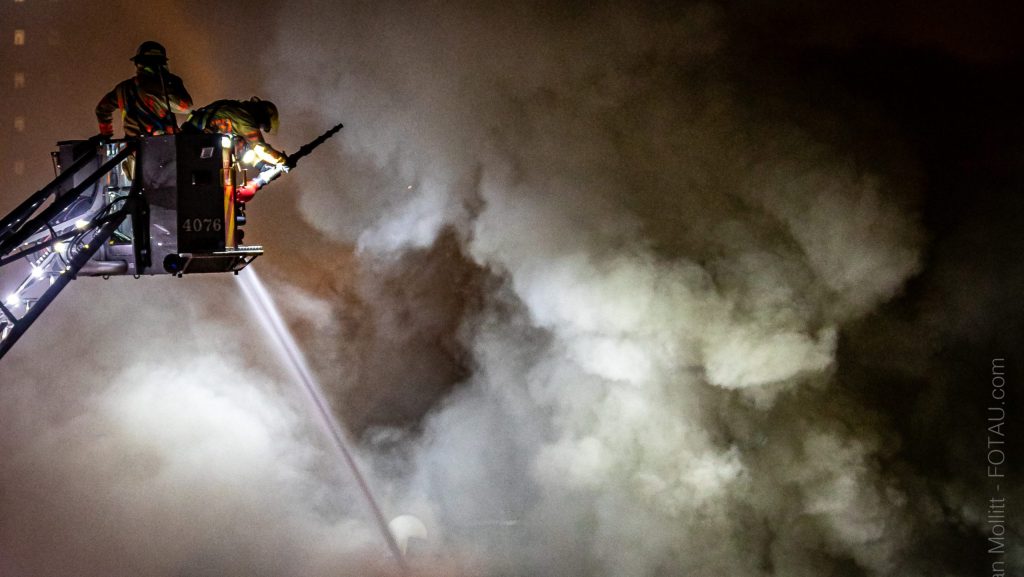Outdoor commercial signs must have two-thirds of their content in French: Quebec

This is a modal window.
This video is either unavailable or not supported in this browser
Posted January 15, 2024 2:25 pm.
Last Updated January 15, 2024 6:38 pm.
Starting June 2025, outdoor commercial signs in Quebec must have two-thirds of their content in French, according to the Quebec government.
The government released details of its French-language law for outdoor commercial signs, which include the requirement of adding French descriptors where they are not already present. French words will need to occupy two-thirds of the overall visual space on signs, as opposed to one-third for words in a language other than French.
Brand names are allowed to stay, but if they are in English or another language, they must be accompanied by French words explaining the store’s products.
The government estimates the costs to make these changes will be between $7 million and $15 million.
“The shape of small businesses is not good in Quebec, and what government should do is to not impose new costs,” said François Vincent, Quebec vice-president of the Canadian Federation of Independent Businesses.
“The level of confidence of small businesses never has been so low, except the 2020 COVID crisis, in 15 years.” said Vincent.
He also says updating a businesses trademark can take a while. “We do know that it takes a lot of times and there’s backlog there just for CFIB who are waiting for, it’s been three years that we’re waiting for French trademarks.”
Melissa Tehrani, a lawyer and partner at Gowling WLG Canada says the draft regulations look “promising” but does “lack clarity.”
“The Quebec French Language Minister indicated that this is a matter of proportion and he seemed to indicate that the requirement would be more with regards to the area allotted or the percentage of the signage as opposed to font size, for instance,” says Tehrani, “that’s why I think we do need a bit more commentary and clarity on how that will all play out.”
The regulations, published as a draft on Jan. 10, create new obligations for employers on the language of their signs, the contracts they sign and their product packaging. This is all part of the government’s mission to promote the French language.
An email statement to CityNews from the office of French Language Minister Jean-François Roberge reads, “Quebec is the only French-speaking place in North America. It must seem that way when Quebecers and tourists alike stroll the streets of Quebec. Many companies already comply with the draft regulations. The OQLF (Office québécois de la langue française) will support these companies in implementing the new rules. The OQLF plans to carry out awareness-raising campaigns to inform companies of the new requirements, and will offer personalized assistance to help companies quickly validate their projects to correct their signs. Once a company has demonstrated its willingness to undertake a project to correct their signs, the Office will provide all the support required. A company has full latitude to choose the means of compliance and to implement them.”
Quebecers have 45 days, starting from the publication of the draft, to provide their input on the new regulations.
